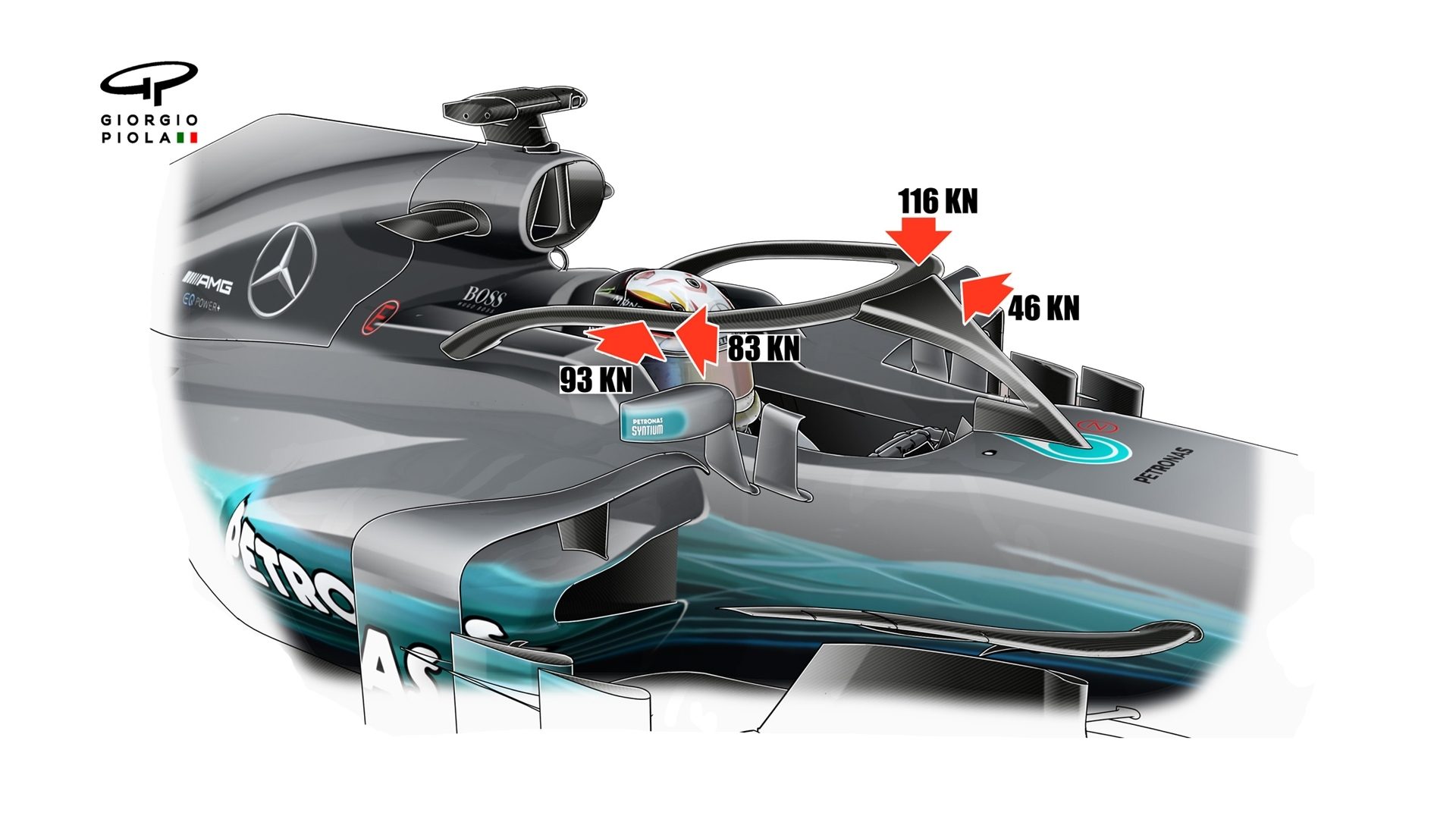When the 2018 F1 season kicks off next month, with it comes the formal debut of the halo. The new head-protection device is one of the more criticized additions to the sport as of late. Meant to protect the drivers from flying debris, the halo isn’t exactly attractive.
While the drivers and fans alike may turn their heads at its very mention, it’s here to stay for the time being.
According to Mercedes, the titanium device is capable of holding the weight of a London double decker bus. For reference, that’s the equivalent of 12 tonnes (26,455lb) balanced across a 15.4lb (7kg) metal frame.
The information comes courtesy of Mercedes’ technical director James Allison. Speaking in a video released by the Silver Arrow F1 team, Allison admits adapting the structure to the 2018 car proved a “significant challenge”.
Take a double-decker bus. Balance it on top of a 7kg metal frame. Then bolt that to a 300km/h racing car
Those are the kind of numbers the 2018 @F1 chassis has to be able to stand up to… ?
So, what else do we know about the Halo so far? James Allison explains all ? pic.twitter.com/gtNHbw7SIV
— Mercedes-AMG F1 (@MercedesAMGF1) February 7, 2018
Allison continues, stating the halo isn’t “a light piece of work”. In fact, it’s several pounds of titanium on top of the car, a factor the team considered when making sure this year’s chassis weighed in under the limit. Another factor in its heft is needing to take “really high loads”. Mercedes ensured it was strong enough to protect the drivers as intended.
It will come as no surprise then that the halo isn’t a cutting-edge aerodynamic aid. The basic device as you’ll see this year is the same for all teams. Instead, all teams can modify the halo by way of aerodynamic fairings. What this does is allow the teams a way to ensure the halo doesn’t interfere with the car’s performance.
As many fans feel, James describes the halo as “a bit of an acquired taste,” which is the diplomatic response. He’s quick to point out this is the first generation of the device in F1 and, like all things in the sport, it will evolve over time. As time goes on the teams will improve both the safety factor and the aesthetics of the halo.
If you’re asking our opinion, we’d suggest having a look at the second gen Formula E car.
See more articles on F1 2018 Season and Halo.
